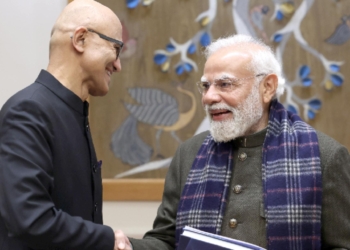New York: Free-floating Jupiter-sized “planets” found in space and orbiting only each other have baffled astronomers, forcing them to rethink their theories of star and planet formation.
Astronomers used NASA’s James Webb Space Telescope to identify 500 or so previously unseen spots in Orion Nebula in October.
The telescope observed about 40 pairs in a detailed new survey of the famous Orion Nebula and found that dozens of the worlds appear to be in pairs orbiting each other.
Now, in an article in Wired that was originally published in Quanta Magazine, scientists have attempted to explain the so-called Jupiter Mass Binary Objects (JUMBOs) — gas giant pairs, free-floating and orbiting only each other.
According to them, these objects are too light to have formed alone and are unexpectedly numerous.
One possibility is planets with “tightly-spaced orbits” being dragged out of their solar system by a passing star.
Still, “we’re missing something and we don’t know what it is,” said Nienke van der Marel, a researcher who studies planet formation at Leiden Observatory in the Netherlands.
The JUMBOs have caught experts in both star and planet formation flat-footed.
“This has not been predicted at all. There are no existing theories where we would have expected these wide, free-floating planetary objects in these numbers,” said Matthew Bate, an astrophysicist at the University of Exeter specialising in star formation.
At least some of the JUMBOs may be probably mirages.
“The deeper an object lies in a dusty environment (and the Orion nebula is extremely dusty), the tougher it is to distinguish it from a distant, more massive star behind the nebula, which would be expected to have a partner,” said the report.
“One needs to be a bit cautious at the moment,” said Nuria Miret Roig of the University of Vienna.
(IANS)

















